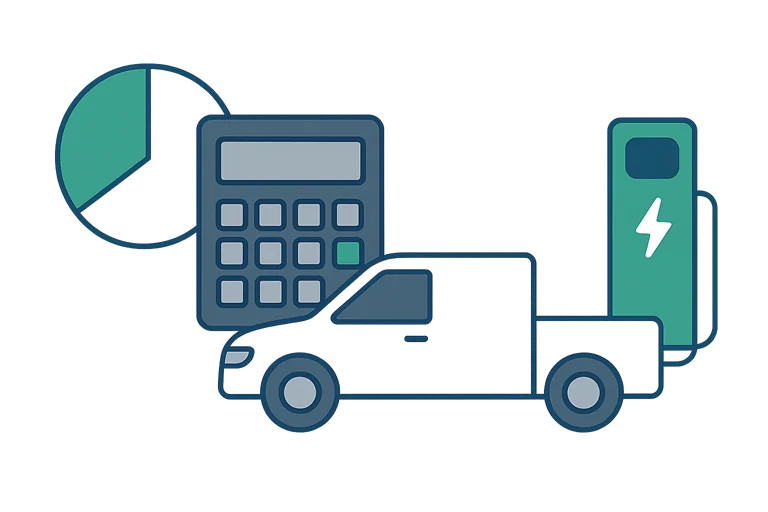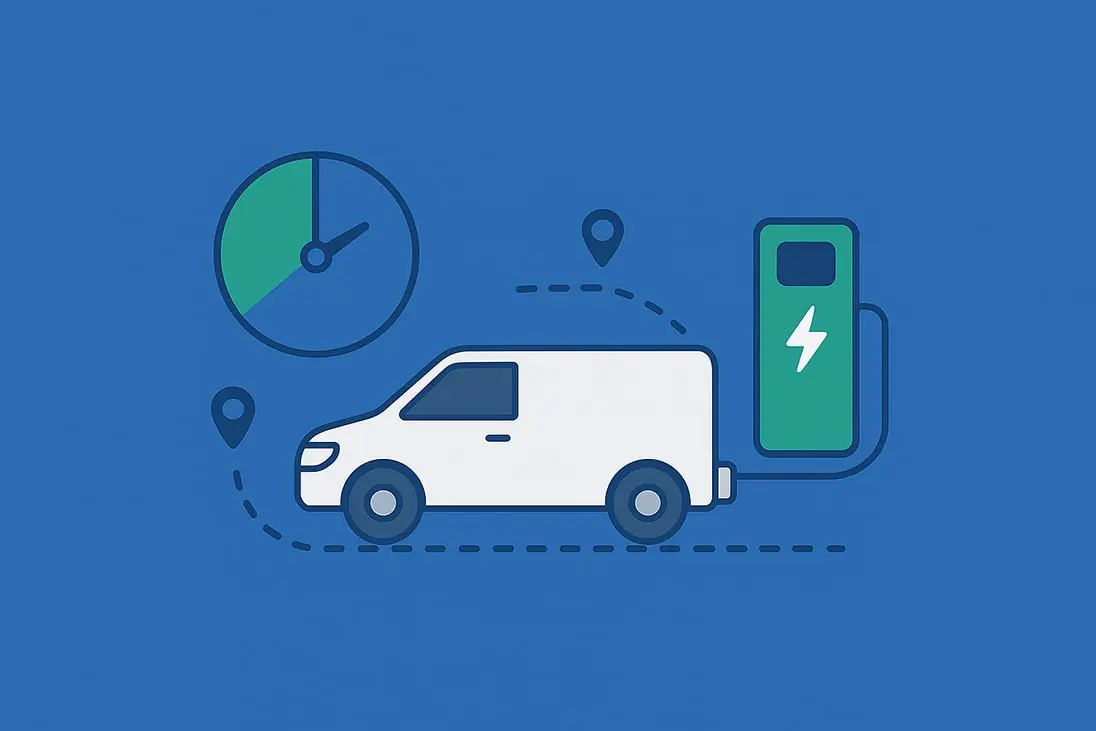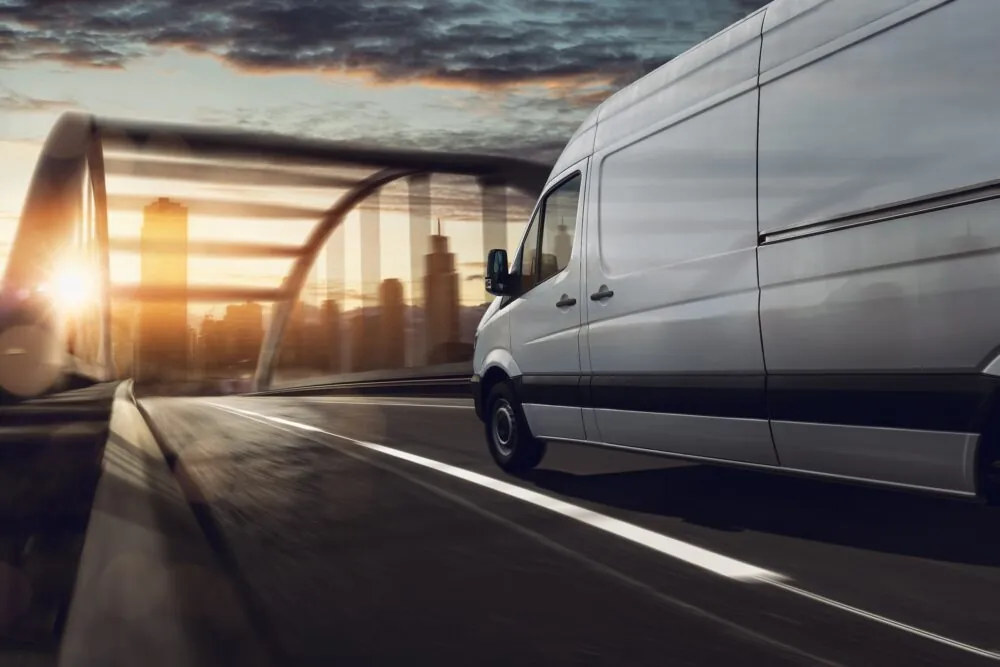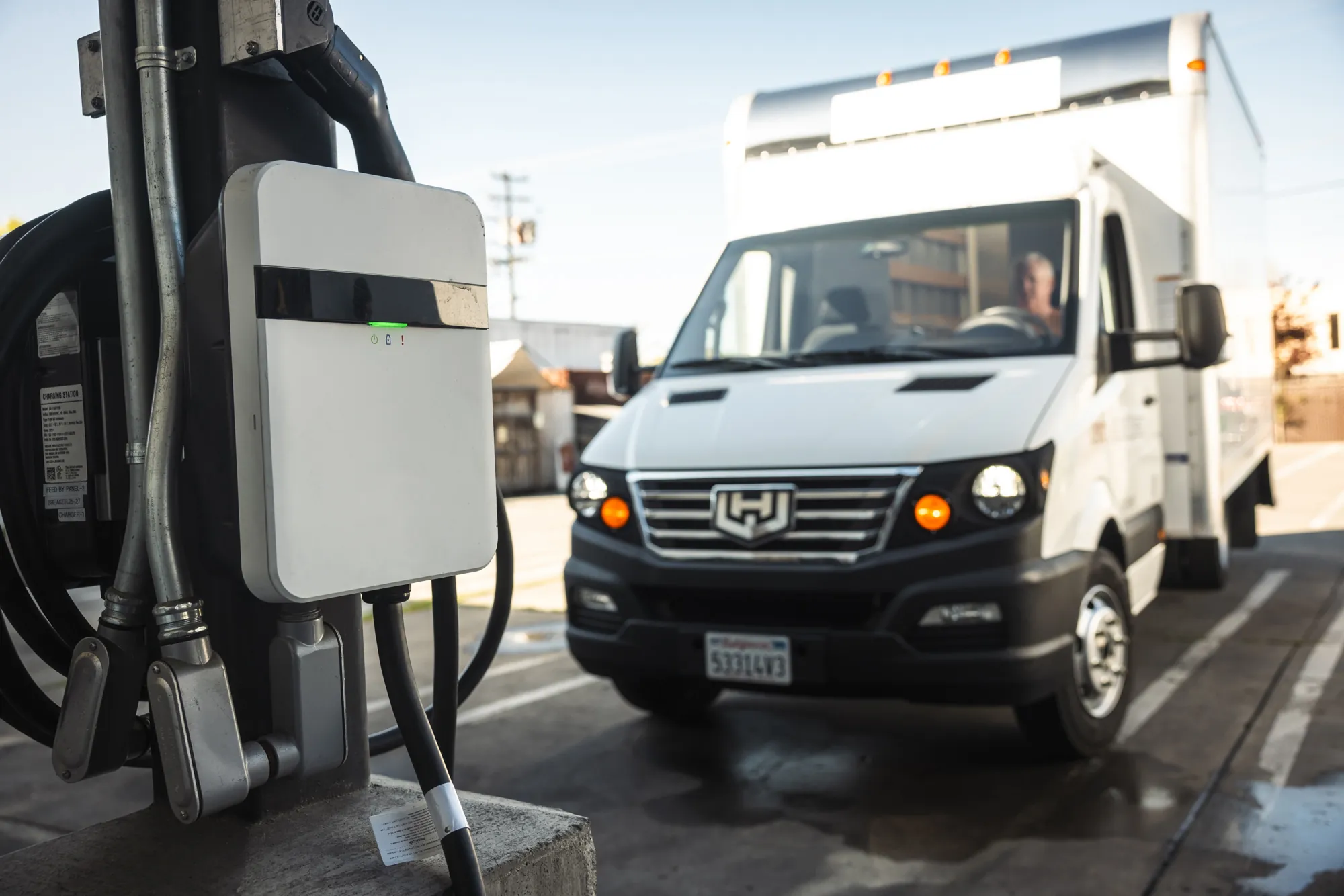Smarter fleet electrification starts with range intelligence
Transitioning to electric vehicles requires more than just choosing the right models—it’s about knowing how those EVs will actually perform in your fleet’s daily operations. Revolv’s Range Intelligence gives fleet managers clear, data-backed insights into how far vehicles can travel under real-world conditions, helping you plan routes, avoid downtime, and maximize ROI.
By analyzing payload, temperature, topography, and traffic patterns, Range Intelligence takes the guesswork out of EV adoption. The result: a confident transition to electrification with predictable performance, reduced costs, and smoother operations.
Find the EV models that fit your fleet’s needs!
Top FAQs on EV range anxiety
A study from Geotab which analyzed aggregated data sourced from over 2 million vehicles globally found that 75% of light-duty ICE vehicles could be replaced with range-capable battery electric vehicles today. Further, 41% of light-duty vehicles were considered both range capable and cost-effective, delivering a savings potential of around $16,000 per vehicle over 7 years.
Heavy payload, high speed, steep grades, extreme cold or heat, and aggressive driving all raise energy use for both ICE and electric vehicles. Good driving habits and vehicle planning provide EVs benefits that aren’t available for ICE vehicles. NREL cold-weather testing shows sub-freezing temps can trim range 10-30%, but pre-conditioning the cabin while still plugged in and using heat-pump HVAC recovers much of that loss. Smooth acceleration and maximizing regenerative braking typically affect efficiency ±15% between best- and worst-performing drivers, while smart route planning avoids terrain that forces unnecessary climbs. Revolv recommends designing schedules with a 20-30% “reserve buffer” so unexpected detours never force an emergency stop.
Improving your fleet’s EV range starts with improving driver behavior. Simulator work at New Flyer’s Vehicle Innovation Center demonstrates that a well-trained driver can reduce energy consumption by approximately 15% through smooth acceleration, early coasting, and disciplined use of regenerative braking.
Revolv’s structured driver training program creates a meaningful impact both in terms of improving vehicle performance and battery life as well as the overall driver experience. Investing in driver training is one of the most effective and immediate ways to unlock the full potential of your electric fleet. That’s why Revolv includes comprehensive driver training as a standard part of every vehicle deployment.
Battery innovation is advancing on two fronts at once: energy density is climbing while dollars-per-kilowatt-hour keep sliding. A 2025 analysis from the IEA notes average lithium-ion packs were already below $140/kWh in 2023 and foresees a further 40% drop by 2030—roughly mid-$80/kWh—as manufacturing scales, cell-to-pack designs improve, and mineral prices decrease.
These improvements are driven by the industry moving away from nickel-heavy NMC cells toward lithium-iron-phosphate (LFP), which swaps costly nickel and cobalt for abundant iron and phosphate. That change alone cuts pack cost around 30% while boosting durability.

See why EVs deliver the most value for your fleet
Discover your fleet savings potential with Revolv’s EV savings calculator, and quickly understand the economic advantages of transitioning to EVs—and how electrification can align with your company’s financial and sustainability goals.


